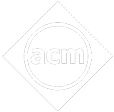| Solid State | Classification of solids based on different binding forces: molecular, ionic, covalent, and metallic solids, amorphous and crystalline solids (elementary idea). Unit cells in two-dimensional and three-dimensional lattices,
Calculation of density of unit cell, packing in solids, packing efficiency, voids, number of atoms per unit cell in a cubic unit cell, point defects, electrical and magnetic properties. Band theory of metals, conductors, semiconductors, insulators, and n and p-type semiconductors. |
| Solutions | Types of solutions, expression of concentration of solutions of solids in liquids, the solubility of gases in liquids, solid solutions, colligative properties – the relative lowering of vapour pressure, Raoult’s law, the elevation of boiling point, depression ofzing point, osmotic pressure, determination of molecular masses using colligative properties, abnormal molecular mass, Hoff factor. |
| Electrochemistry | Redox reactions, conductance in electrolytic solutions, specific and molar conductivity, variations of conductivity with concentration, Kohlrausch’s Law, electrolysis and law of electrolysis (elementary idea),
Dry cell -electrolytic cells and Galvanic cells, lead accumulator, EMF of a cell, standard electrode potential, Nernst equation and its application to chemical cells, Relation between Gibbs energy change and emf of a cell, fuel cells, corrosion. |
| Chemical Kinetics | Rate of a reaction (average and instantaneous), factors affecting rate of reaction: concentration, temperature, catalyst; order and molecularity of a reaction, rate law, and specific rate constant, integrated rate equations, and half-life (only for zero and first-order reactions), the concept of collision theory (elementary idea, no mathematical treatment). Activation energy, Arrhenius equation. |
| Surface Chemistry | Adsorption – physisorption and chemisorption, factors affecting the adsorption of gases on solids, catalysis, homogenous and heterogeneous activity, and selectivity;
Enzyme catalysis colloidal state distinction between true solutions, colloids, and suspension; lyophilic, lyophobic multimolecular and macromolecular colloids; properties of colloids; Tyndall effect, Brownian movement, electrophoresis, coagulation, emulsion – types of emulsions. |
| General Principles and Processes of Isolation of Elements | Principles and methods of extraction – concentration, oxidation, reduction – electrolytic method and refining; occurrence and principles of extraction of aluminium, copper, zinc, and iron. |
| p – Block Elements | Group 15 Elements: General introduction, electronic configuration, occurrence, oxidation states, trends in physical and chemical properties; nitrogen preparation properties & uses; compounds of nitrogen, preparation, and properties of ammonia and nitric acid, oxides of nitrogen (Structure only); Phosphorus – allotropic forms, compounds of phosphorus: preparation and properties of phosphine, halides PCl3, PCl5 and oxoacids (elementary idea only).
Group 16 Elements: General introduction, electronic configuration, oxidation states, occurrence, trends in physical and chemical properties, dioxygen: Preparation, Properties and uses, classification of oxides, Ozone, Sulfur -allotropic forms; compounds of sulfur: Preparation properties and uses of sulfur-dioxide, sulphuric acid: industrial process of manufacture, properties and uses; oxoacids of sulphur (Structures only).
Group 17 Elements: General introduction, electronic configuration, oxidation states, occurrence, trends in physical and chemical properties; compounds of halogens, preparation, properties and uses of chlorine and hydrochloric acid, interhalogen compounds, oxoacids of halogens (structures only). Group 18 Elements: General introduction, electronic configuration, occurrence, trends in physical and chemical properties, uses. |
| d and f-Block Elements | General introduction, electronic configuration, occurrence and characteristics of transition metals, general trends in properties of the first-row transition metals – metallic character, ionization enthalpy, oxidation states, ionic radii, colour, catalytic property;
Magnetic properties, interstitial compounds, alloy formation, preparation and properties of K2Cr2O7 and KMnO4. Lanthanoids – Electronic configuration, oxidation states, chemical reactivity, and lanthanoid contraction and its consequences. Actinoids – Electronic configuration, oxidation states, and comparison with lanthanoids. |
| Coordination Compounds | Coordination compounds – Introduction, ligands, coordination number, colour, magnetic properties and shapes, IUPAC nomenclature of mononuclear coordination compounds. Bonding, Werner’s theory, VBT, and CFT; Structure and stereoisomerism, the importance of coordination compounds (in qualitative inclusion, extraction of metals and biological system). |
| Haloalkanes and Haloarenes | Haloalkanes: Nomenclature, nature of C-X bond, physical and chemical properties, mechanism of substitution reactions, optical rotation. Haloarenes: Nature of C -X bond, substitution reactions (directive influence of halogen in monosubstituted compounds only. Uses and environmental effects of – dichloromethane, trichloromethane, tetrachloromethane, iodoform freons, DDT. |
| Alcohols, Phenols, and Ethers | Alcohols: Nomenclature, methods of preparation, physical and chemical properties( of primary alcohols only), identification of primary, secondary and tertiary alcohols, mechanism of dehydration uses with special reference to methanol and ethanol.
Phenols: Nomenclature, methods of preparation, physical and chemical properties, acidic nature of phenol, electrophilic substitution reactions, uses of phenols. Ethers: Nomenclature, methods of preparation, physical and chemical properties, uses. |
| Aldehydes, Ketones and Carboxylic Acids | Aldehydes and Ketones: Nomenclature, nature of carbonyl group, methods of preparation, physical and chemical properties, mechanism of nucleophilic addition, the reactivity of alpha hydrogen in aldehydes: uses. Carboxylic Acids: Nomenclature, acidic nature, methods of preparation, physical and chemical properties; uses. |
| Organic Compounds Containing Nitrogen | Amines: Nomenclature, classification, structure, methods of preparation, physical and chemical properties, uses, identification of primary, secondary and tertiary amines. Cyanides and Isocyanides – will be mentioned at relevant places in context. Diazonium salts: Preparation, chemical reactions, and importance in synthetic organic chemistry. |
| Biomolecules | Carbohydrates: Classification (aldoses and ketoses), monosaccharides (glucose and fructose), D-L configuration oligosaccharides (sucrose, lactose, maltose), polysaccharides (starch, cellulose, glycogen) importance.
Proteins – Elementary idea of α – amino acids, peptide bond, polypeptides, proteins, the structure of proteins – primary, secondary, tertiary structure and quaternary structures (qualitative idea only), denaturation of proteins; enzymes. Hormones – Elementary idea excluding structure. Vitamins – Classification and functions. Nucleic Acids: DNA and RNA. |
| Polymers | Classification: Natural and synthetic, methods of polymerization (addition and condensation), copolymerization, some important polymers: natural and synthetic, like polythene, nylon polyesters, bakelite, rubber. Biodegradable and non-biodegradable polymers. |
| Chemistry in Everyday life | Chemicals in medicines: Analgesics, tranquillizers, antiseptics, disinfectants, antimicrobials, antifertility drugs, antibiotics, antacids, and antihistamines. Chemicals in food: Preservations, artificial sweetening agents, elementary idea of antioxidants. Cleansing agents: Soaps and detergents, cleansing action. |








































